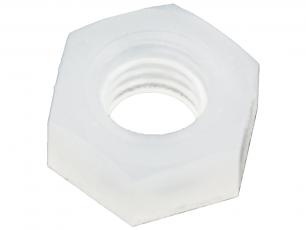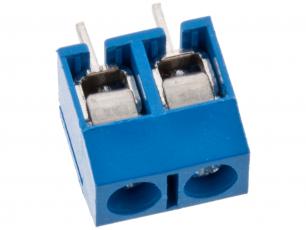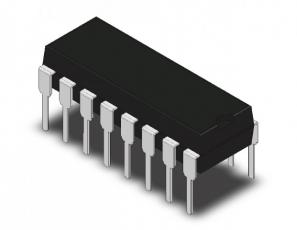Product description
This board is a simple carrier of Allegro's ±15.5 A ACS711 Hall effect-based linear current sensor with overcurrent fault output, which offers a low-resistance (~0.6 mO) current path and electrical isolation up to 100 V. This version accepts a bidirectional current input with a magnitude up to 15.5 A and outputs a proportional analog voltage centered at Vcc/2 with a typical error of ±5%. It operates from 3 V to 5.5 V, so it can interface directly to both 3.3 V and 5 V systems.
This current sensor is a carrier board or breakout board for Allegro's ACS711KEXLT-15AB-T Hall effect-based linear current sensor with overcurrent fault output; we therefore recommend careful reading of the ACS711 datasheet before using this product. This sensor has an operating voltage of 3 V to 5.5 V and an output sensitivity of 90 mV/A when Vcc is 3.3 V (or 136 mV/A when Vcc is 5 V).
Features:
* Designed for bidirectional input current from -15.5 A to 15.5 A (though the robust sensor IC can tolerate 100 ms transient current spikes up to 100 A).
* Conductive path internal resistance is typically 0.6 mO, and the PCB is made with 2-oz copper, so very little power is lost in the board.
* Use of a Hall effect sensor means the IC is able to electrically isolate the current path from the sensor's electronics (for applications up to 100 V), which allows the sensor to be inserted anywhere along the current path and to be used in applications that require electrical isolation.
100 kHz bandwidth.
* Good accuracy and reliability: factory calibration results in a typical total output error of ±5% at room temperature, the output offset voltage is extremely stable, and the sensor has zero magnetic hysteresis.
* Overcurrent FAULT output latches low when current magnitude exceeds 15.5 A.
* Operating temperature range of -40°C to 125°C.
* The pads are labeled on the bottom silkscreen, as shown in the picture to the right. The silkscreen also shows the direction that is interpreted as positive current flow via the +i arrow.
This current sensor is a carrier board or breakout board for Allegro's ACS711KEXLT-15AB-T Hall effect-based linear current sensor with overcurrent fault output; we therefore recommend careful reading of the ACS711 datasheet before using this product. This sensor has an operating voltage of 3 V to 5.5 V and an output sensitivity of 90 mV/A when Vcc is 3.3 V (or 136 mV/A when Vcc is 5 V).
Features:
* Designed for bidirectional input current from -15.5 A to 15.5 A (though the robust sensor IC can tolerate 100 ms transient current spikes up to 100 A).
* Conductive path internal resistance is typically 0.6 mO, and the PCB is made with 2-oz copper, so very little power is lost in the board.
* Use of a Hall effect sensor means the IC is able to electrically isolate the current path from the sensor's electronics (for applications up to 100 V), which allows the sensor to be inserted anywhere along the current path and to be used in applications that require electrical isolation.
100 kHz bandwidth.
* Good accuracy and reliability: factory calibration results in a typical total output error of ±5% at room temperature, the output offset voltage is extremely stable, and the sensor has zero magnetic hysteresis.
* Overcurrent FAULT output latches low when current magnitude exceeds 15.5 A.
* Operating temperature range of -40°C to 125°C.
* The pads are labeled on the bottom silkscreen, as shown in the picture to the right. The silkscreen also shows the direction that is interpreted as positive current flow via the +i arrow.










